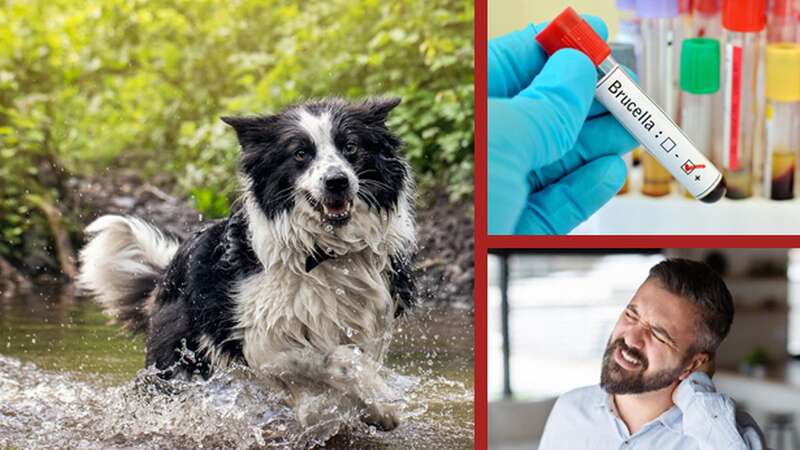
Three people in the UK have contracted a rare disease that is usually confined to dogs, says the UK Health Security Agency - but what exactly is Brucella Canis and how do you spot it?
The bacterial infection is more common in parts of Eastern Europe and had previously only been seen in isolated incidents from animals imported from the region. However, cases among dogs in the UK are soaring, with 91 reported this year alone. Experts believe these have come from contact between British dogs and imported dogs in kennels, as well as the pups of imports at breeders.
Brucella Canis is a bacterial infection that can cause pain, lameness and infertility in dogs, with the illness now passing from the canine population to humans for the first time. But according to a recent report from the Human Animal Infections and Risk Surveillance (HAIRS), the disease continues to be considered a 'low risk in the UK'.
What is Brucella Canis?
Brucella canis is a bacteria infection, with the illness primarily impacting the reproductive system of both male and female dogs. The Pet Health Network. says this bacteria can lead to infertility and miscarriages in female dogs, with male dogs suffering from scrotal inflammation and infertility.
The disease is passed from dog to dog through contact, including sex. The illness can affect dogs of all breeds and ages. However, it is more common in older dogs. Brucella is known as a 'zoontonic' disease, meaning it can be passed from infected animals to humans, or vice versa.
 Dog who 'always melts hearts' with his smile hopes to find a loving family
Dog who 'always melts hearts' with his smile hopes to find a loving family
What are the symptoms of Brucella Canis in humans?
The disease is rare in humans but can cause intense symptoms for those infected. The NHS. says potentially severe symptoms that can take several weeks - or even years - to appear include:
Headaches
- Fever
- Weight loss
Extreme tiredness
- Sweating
- Back and joint pain
If the case is more severe, Brucella can cause septicaemia, meningitis and arthritis. Symptoms can also return over several years, with the severity often fluctuating. No fatal cases have been reported in humans but symptoms of the infection can take years to present themselves and may return over several years. Fortunately, the infection is readily treatable with antibiotics.
What are the signs of Brucella Canis in dogs?
The signs of disease in dogs can vary tremendously. Sadly, the disease is incurable for dogs, with symptoms including:
Swollen lymph nodes
- Lethargy
Weak, sickly newborn puppies
- Difficulty walking
- Back pain
Swollen testicles
- Vaginal discharge
- Inflammation of the skin around the scrotum
How is it actually spread?
It spreads through contract with an infected animal's fluids. The best way to prevent the dog-to-dog spread is to neuter your dog, as the disease is often passed through sex.
Humans can also contract brucellosis in other ways:
 Sweet rescue dog with shy personality desperate to find a new best friend
Sweet rescue dog with shy personality desperate to find a new best friend
- Eating dairy products, like cheese and ice cream, made from unpasteurised milk
- Eating raw or undercooked meat
Drinking milk that has not been pasteurised (heat-treated to kill bacteria)
Read more similar news:
Comments:
comments powered by Disqus





























